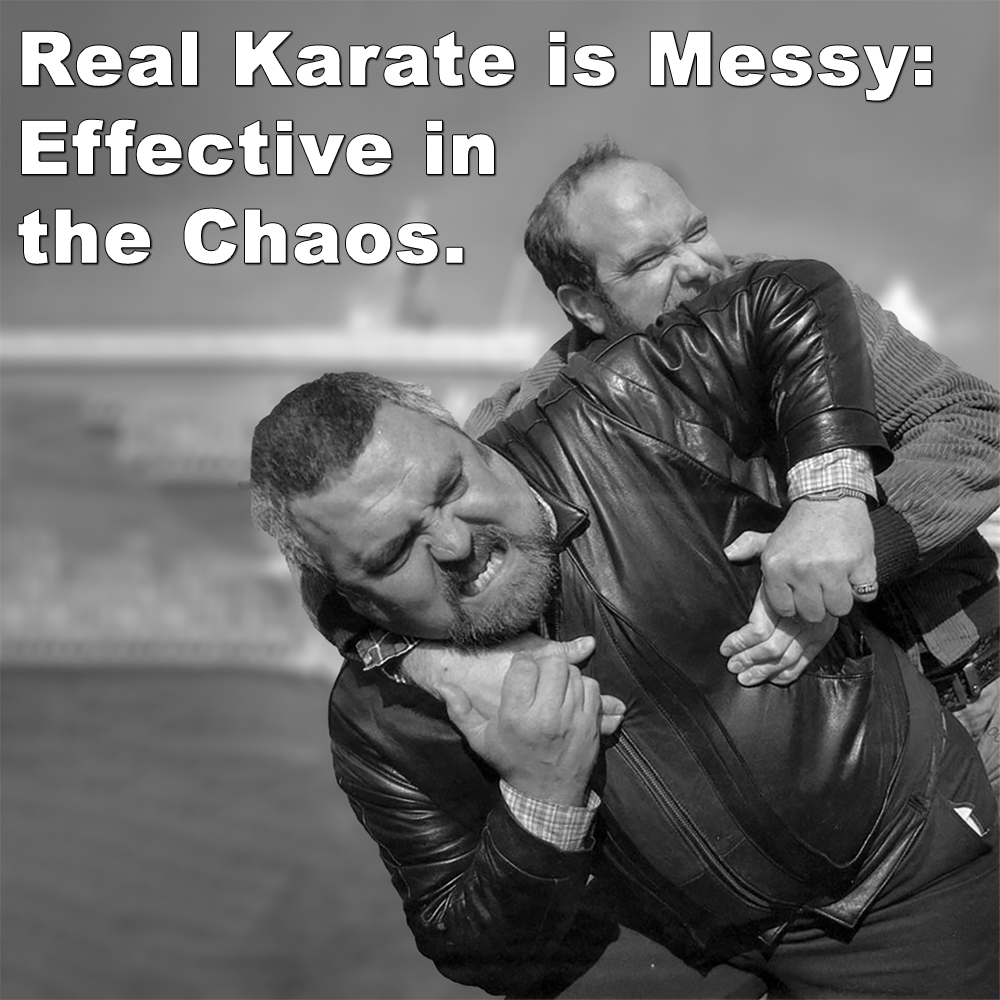
Real Karate is Messy: Effective in the Chaos.
Posted by ADAM CARTER on JUN 19, 2024

Real Karate is Messy: Effective in the Chaos.
(Approx 2 minute 20 second read)
We all recognize, or at least we should, the value of our foundational techniques – the basics. It’s easy, though, to want to cast them aside in favor of the more complicated or interesting. While that’s a natural part of progression, neglecting a strong foundation can lead to poor and ineffective ‘advanced’ techniques.
Mastering the basics is crucial for building a solid foundation. There is absolutely nothing wrong with taking as long as necessary to get them right. Rushing into more and more techniques, or wanting to learn the next kata before mastering the previous one, often results in sloppy and ineffective karate.
Once you have a good grasp of your basics, your process of thinking about them should begin to change. It’s important to understand that principles are more important than specific techniques; this allows for adjustments to movements based on those principles.
I’m often asked what this or that means in kata. But the problem begins way before moving from kata to kata. Many times, you can get yourself stuck analyzing kata by following the name of the technique, the terminology, to the letter, with no room for any alteration. If it’s a ‘chudan uke,’ it is nothing more than a middle block.
When I refer to principles in this context, I mean understanding how things work – the ‘why,’ not just the ‘how.’ Viewing movements as a whole, from beginning to end, is crucial. Often, practitioners focus only on the end of the movement, the end of the technique, leading to misunderstandings about the technique’s true purpose.
Sometimes described as a ‘dead hand’ (which should always be active and in no way ‘dead’), your non-dominant hand must always be considered as part of any movement.
Blending technique into movement is where beginners often get confused. Techniques are like blueprints for building something. They are not the final output, but methods to produce the output.
Many people try to memorize every possible technique for all situations, leading to a technique-based learning style.
I’ve witnessed this many times from teaching seminars or visiting dojo, where students go from grade to grade, passing the next belt, without any deeper understanding.
This approach can cause problems if a practitioner encounters a situation they haven’t trained for or can’t recall the right technique, leading to a freeze response.
Imagine facing a life-threatening attack in real life. Would you focus on defending yourself, or on applying your technique to ensure it looks perfect? Of course, you know what the answer is, but how many of you are more concerned with performance – the way it looks—than with how effective it is?
It is often said that the most effective karate actually looks quite ‘messy.’ While technique must be perfected, it shouldn’t be the conscious focus. The primary goal should be to defend yourself using the principle, not how good it looks.
The basics – the fundamentals – are the building blocks of effective karate. But understand them in such a way that you don’t need to remember every single technique in your curriculum. Recognize that they are movements from point A to point B, and can be used in different ways beyond their names.
By prioritizing principles and understanding over rote memorization, you can develop a deeper connection to your karate. In time, it will become much more effective for you.
![]() Photo Credit: Gary Spiers – from Fighting Arts International
Photo Credit: Gary Spiers – from Fighting Arts International
